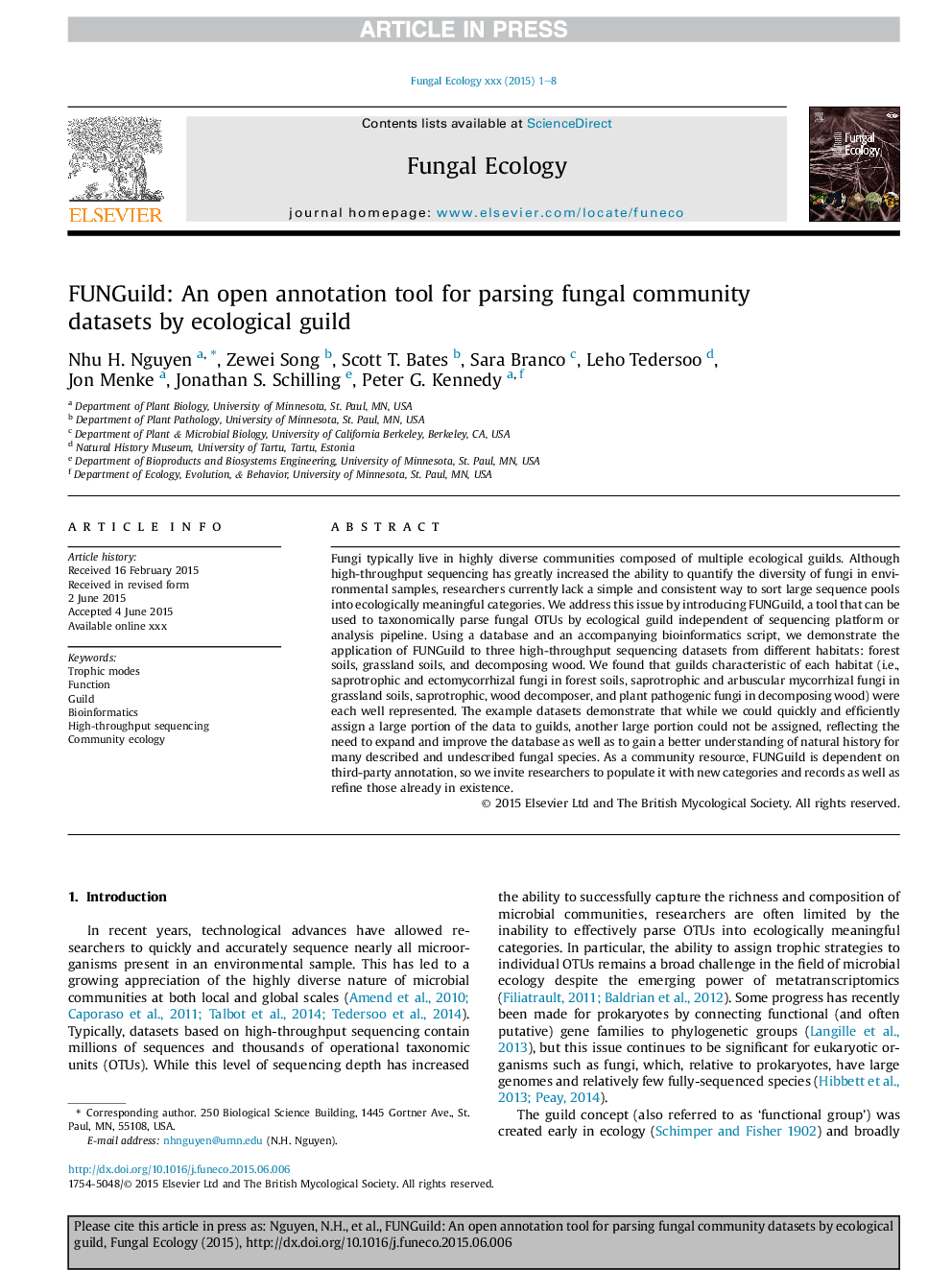| Article ID | Journal | Published Year | Pages | File Type |
|---|---|---|---|---|
| 8384515 | Fungal Ecology | 2016 | 8 Pages |
Abstract
Fungi typically live in highly diverse communities composed of multiple ecological guilds. Although high-throughput sequencing has greatly increased the ability to quantify the diversity of fungi in environmental samples, researchers currently lack a simple and consistent way to sort large sequence pools into ecologically meaningful categories. We address this issue by introducing FUNGuild, a tool that can be used to taxonomically parse fungal OTUs by ecological guild independent of sequencing platform or analysis pipeline. Using a database and an accompanying bioinformatics script, we demonstrate the application of FUNGuild to three high-throughput sequencing datasets from different habitats: forest soils, grassland soils, and decomposing wood. We found that guilds characteristic of each habitat (i.e., saprotrophic and ectomycorrhizal fungi in forest soils, saprotrophic and arbuscular mycorrhizal fungi in grassland soils, saprotrophic, wood decomposer, and plant pathogenic fungi in decomposing wood) were each well represented. The example datasets demonstrate that while we could quickly and efficiently assign a large portion of the data to guilds, another large portion could not be assigned, reflecting the need to expand and improve the database as well as to gain a better understanding of natural history for many described and undescribed fungal species. As a community resource, FUNGuild is dependent on third-party annotation, so we invite researchers to populate it with new categories and records as well as refine those already in existence.
Related Topics
Life Sciences
Agricultural and Biological Sciences
Ecology, Evolution, Behavior and Systematics
Authors
Nhu H. Nguyen, Zewei Song, Scott T. Bates, Sara Branco, Leho Tedersoo, Jon Menke, Jonathan S. Schilling, Peter G. Kennedy,
